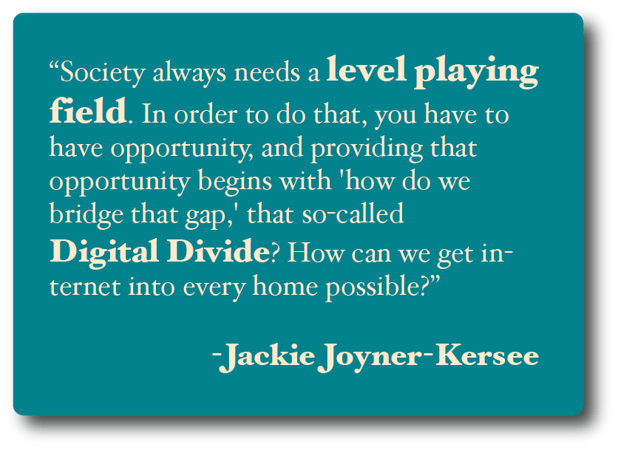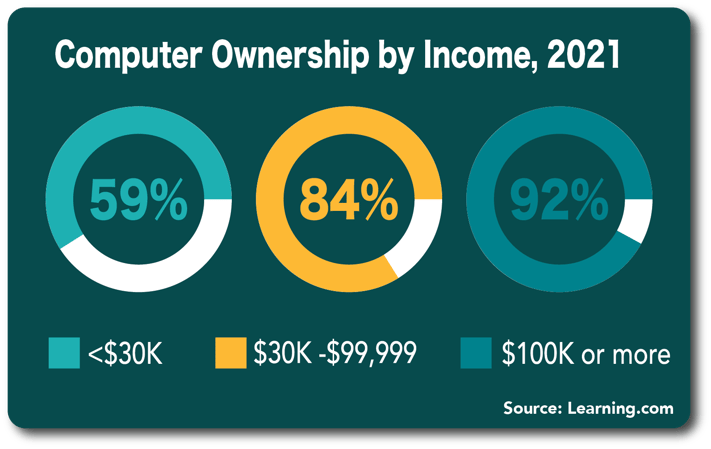ALI Research Staff | Published July 21, 2023
Schools and institutions everywhere experienced an abrupt transformation due to the global pandemic as they quickly adapted to remote learning environments.
This fundamental paradigm shift cleared the path for the emerging trend of digital education, which has permanently changed how students learn and teachers teach.
Giving kids the necessary 21st-century skills and digital literacy has become crucial in this brave new world.

The integration of technology into classrooms is not new.
The COVID-19 crisis merely served as a catalyst that brought digital learning to the fore of discussions about education.
As the pandemic spread, educators and decision-makers understood the pressing need to close the digital divide and adopt cutting-edge approaches to guarantee continuity in education.
As a result, digital education emerged as a crucial lifeline that allowed students to continue their academic careers despite the logistical limitations imposed by the lockdown.
The importance of teaching 21st-century skills and digital literacy to today's pupils must be understood in the context of this disruptive wave.
The capacity to use digital tools, critically evaluate information, communicate across virtual platforms, and adapt to constantly changing technical environments has become a necessity for future success in an increasingly interconnected and technology-driven society.
By giving students these fundamental skills, we enable them to thrive in the digital age and participate fully in a society that is interconnected on a worldwide scale.
However, many have expressed concerns about the growth of the digital education ecosystem. The focus on experiential learning and in-person communication in traditional schooling has long helped to build a feeling of community and facilitate tactile learning.
There is a legitimate concern that an over-reliance on the virtual world might restrict social contacts, hamper the development of specific practical skills, and have other possible negative effects.
It is crucial to address these issues as we investigate this new territory and strike a delicate balance between utilizing digital education's advantages and retaining the core principles of holistic learning.
Here we explore in detail the emerging trend of digital learning. We examine the value of educating students in digital literacy and 21st-century skills while also addressing worries about the practical application of digital learning and its possible downsides.
By focusing on these important elements, we can help educators, administrators, and policy-makers create an environment for digital education that is efficient and inclusive while also highlighting the potential and difficulties that lie ahead.
Broadly speaking, a digital curriculum is one that uses technology to provide educational resources.
These might be student-facing and could include multimedia materials, virtual simulations, interactive web resources, and adaptable learning tools.
Teacher-facing resources allow educators to leverage technology and web-based tools to select and adapt student resources, monitor and assess progress, analyze data for decision-making, and communicate with students, parents, and other stakeholders in real time.
The versatility and scalability of a digital curriculum provide customized learning opportunities.
Students have 24/7 access to digital textbooks, workbooks, and study materials. Podcasts, films, and other multimedia content improve engagement.
Virtual simulations offer a practical application of skills and knowledge. Adaptive learning technologies track students' progress and provide tailored feedback while customizing lessons to their requirements.
Additionally, diverse learning styles can be accommodated by a digital curriculum, enabling differentiation in the classroom.
Students are given the freedom to learn at their own speed and explore subjects in a variety of ways thanks to the seamless integration of technology.
The digital divide continues to represent a serious challenge to equal access to technology in education.
Efforts include giving underserved communities access to technology and the Internet.
Programs exist to address this by providing free laptops and setting up public Wi-Fi networks, creating a more inclusive digital environment.

Breaking down barriers, digital education gives students who lack traditional resources chances.
Remote and underserved students can access top-notch educational information thanks to online platforms and virtual classrooms, which transcend geographic boundaries.
Utilizing digital tools promotes an egalitarian environment where all kids can succeed.
Although there has been progress, there is still a long way to go in closing the gap. To guarantee that every student has access to digital education, cooperation between governments, educational and corporate institutions, and communities is essential.
By pursuing equal access, we unleash the revolutionary potential of technology and pave the way for a world where everyone has access to the best educational opportunities.
Students gain from digital education's improved accessibility, flexibility, and convenience.
Engagement and results are optimized via personalized instruction, adaptive assessments, and quick feedback. It fosters 21st-century skills, including problem-solving, collaboration, critical thinking, and digital literacy.
Sharing resources among teachers makes it easier for them to collaborate. Delivery through several channels accommodates various learning styles, encouraging inclusion.
Teachers and parents benefit from digital platforms that break down barriers to communication and involvement. Tools for data analysis enable instructors to make wise choices, increasing motivation and accountability.
Although there are many advantages to digital education, we need to acknowledge the unique challenges it creates.
One challenge frequently discussed is the loss of hands-on experiences and face-to-face encounters that can affect how some abilities are developed and make it more difficult to create social connections.
It is, therefore, essential to incorporate practical hands-on elements into any digital curriculum.
Students should get the chance to participate in hands-on investigations and real-world applications as well as through virtual labs and simulations.

Another concern of parents and teachers is how best to control screen time and reduce distractions. Long-term use of screens may increase sedentary behavior and raise the risk of health problems.
To reduce this, parents, schools, and others must work together to create standards for responsible screen use.
Digital platforms should also include tools and functions that encourage focus and reduce distractions so that students may continue to be engaged and productive.
Additionally, it is crucial to track and assess the success of digital education. Evaluation should be used often to ensure that children are learning the relevant knowledge and skills.
To continuously improve the digital learning experience and address any issues or restrictions that may come up, it is equally crucial to get feedback from both students and teachers.
Learning has been forever transformed by digital education, but will it ever entirely replace traditional education? The short and simple answer is ‘no.’
The longer and more complicated answer requires that we examine the advantages of both strategies.
Accessibility, interactivity, engagement, and individualized, adaptive learning are all features of digital education.
It provides students with resources that encourage 21st-century capabilities and the skills they will need in an increasingly technological world.
At the same time, traditional teaching methods with hands-on activities and face-to-face interactions promote the development of soft skills, including interpersonal skills, that can only be developed through in-person classroom experiences.
The unique benefits of both traditional and digital approaches to teaching and learning suggest that the optimal strategy is the seamless incorporation of digital technologies in conventional classrooms as opposed to their total replacement.
Finding a balance is crucial. Different subjects and learning objectives could call for different strategies. It's crucial to customize based on students' needs.
A comprehensive and successful learning experience can be obtained by combining the advantages of traditional and digital education.
Despite the impressive advances made by digital education, it is unlikely to displace traditional education completely. The use of digital technologies in conventional classrooms enables a cohesive approach.
A thorough and enjoyable learning experience is guaranteed by striking a balance depending on educational goals and situations.
Although it has changed the educational environment, traditional education will still exist alongside digital education. Both strategies offer various advantages. The trick is incorporating digital technologies into conventional classes.
A balance must be struck. An interesting learning experience is ensured by customization based on student needs. Results are maximized when digital and conventional schooling are combined.
Exploring digital integration, acquiring digital literacy, limiting screen time, and dealing with distractions are all ongoing tasks for STEM educators. Collaboration and ongoing research are crucial.

At the start of the school year, teachers have the chance to create a math classroom where every student feels valued...

Math manipulatives are a great way to make math more accessible for your students, especially if you know they may...

Storytelling is one of the oldest forms of communication as a way to share experiences, understand others, and...